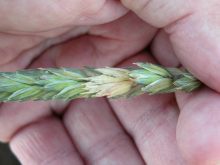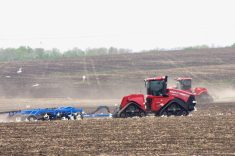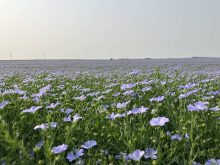As producers know all too well, grain drying can be very expensive.
But what isn’t known is which grain-conditioning system offers the most bang for the buck.

“There’s a real gap in the understanding of the efficiency of — for example — natural air-drying (NAD) systems with supplemental heating,” said Lorne Grieger of the Prairie Agricultural Research Institute, which is assisting Alberta’s four main crop commissions in a project aimed at closing that gap.
Because the first year of the project took place in 2019, researchers were able to observe how farmers’ conditioning equipment performed in one of the more inhospitable growing seasons in recent memory.
“Unfortunately for producers, it provided an opportunity to understand some of the challenges and put them in the context of grain-drying costs and the energy associated with drying a crop down from high moisture content in adverse conditions,” said Grieger.
Read Also

CUSMA access key among other trade noise: Seeds Canada panel
Seeds Canada conference panelists say Canada needs to stay focused and wait as U.S. trade and tariff chaos develops, and a Canada-U.S.-Mexico Agreement review looms
“The tough harvest conditions over the last couple of years really points to the need to understand and be prepared for events such as 2019 where the chances of taking grain off dry in what I would call ‘normal time’ were slight. Having systems prepared and understanding what to do in those situations is really important so you can manage risk.”
In the Team Alberta project, participating producers in the province are allowing an energy engineering and management company (3D Energy Ltd.) to record the performance of their system.
“The data is being used to guide the testing in 2020, including a greater focus on the equipment being used and operating methods,” said Grieger.
But the data has already produced some wake-up calls.
Perhaps the biggest surprise was the high degree of variability in the efficiency of NAD fans aided by supplemental heat.
“It seems not everyone is successful in getting to the end state that they desire and that was really highlighted in this study where there was a high degree of efficiency variability among the systems,” said Grieger.
A notable example was discovered when comparing the fuel efficiency of ‘direct’ versus ‘indirect’ NAD fans with supplemental heating. In a direct system, air is heated by a burner and blown straight into the bin. An indirect system either blows air through a radiator (with heated water) or uses a hot-air exchanger to convey hot air to the fan. Researchers found that the indirect systems were up to a whopping 42 per cent more efficient.
“That was a bit of a surprise,” said Grieger. “When you look at it from a math perspective the grams or kilograms of moisture in propane — or whatever fuel you’re using — shouldn’t affect the overall efficiency very much in terms of how quickly you can dry grain down. But the indirect systems seem to be much more efficient.”
Grieger said there was a running theme throughout the research: some supplementally heated NAD systems are more efficient than previously thought while others proved far less efficient than expected.
“Hence the need for additional testing. What we can say is supplemental heating systems have the potential to be very efficient depending on the setup and operating conditions.”
The project is also looking at how producers actually operate their conditioning equipment. Some didn’t always follow accepted guidelines but still achieved their basic goals, said Grieger.
“We noticed that some producers used temperatures slightly higher than the ones typically recommended but were successful from an efficiency standpoint in terms of getting their grain dry,” he said.
Higher temperatures increase the risk of overheating and while quality was not a factor the researchers looked at last year, it’s something they now plan on doing.
“A lot of times you get results that cause you to say, ‘This is something we should look into further,’” said Grieger. “Understanding these in greater detail is going to be a focus of years two and three.”
This article was originally published in the Alberta Farmer Express.




















